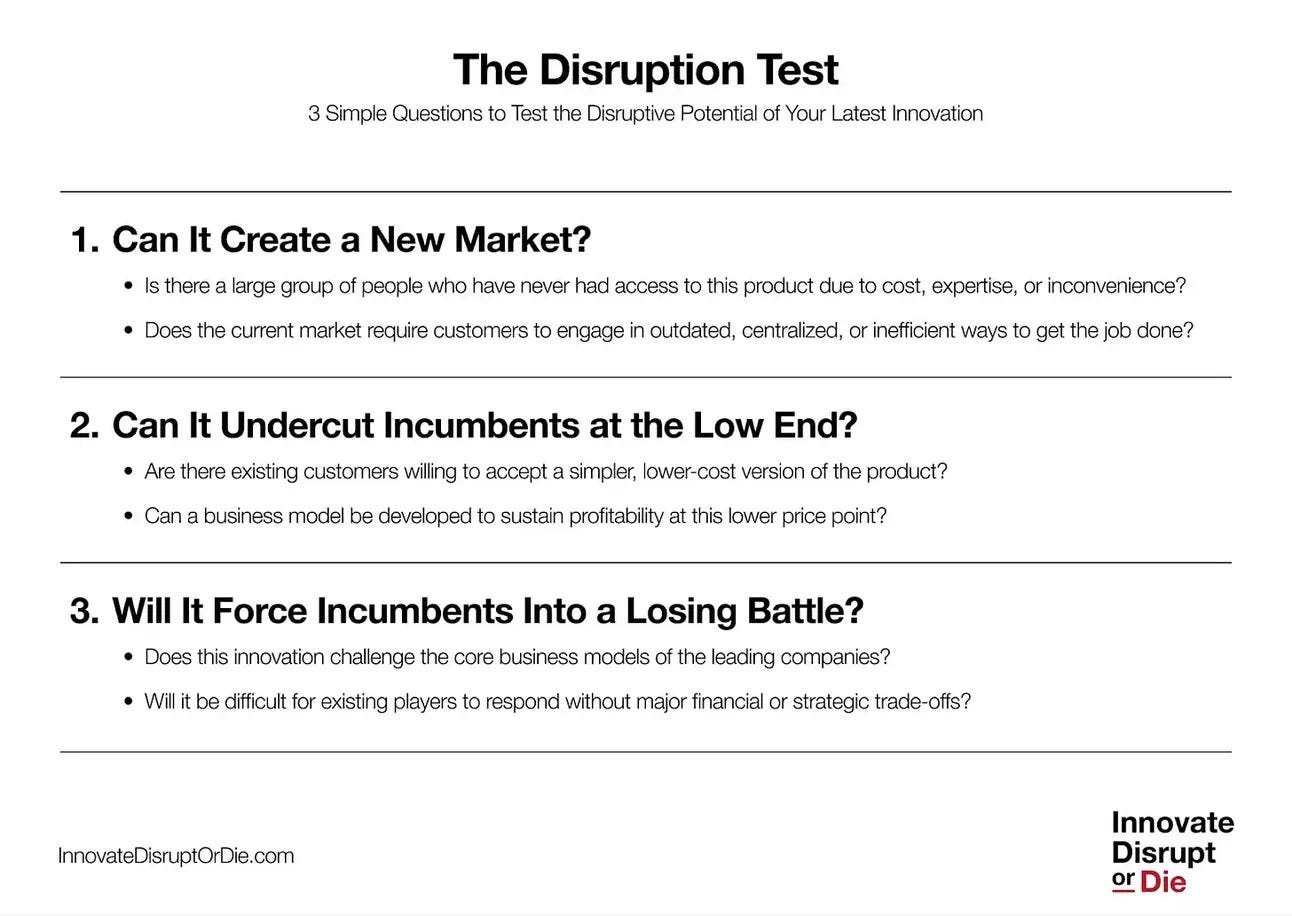Hey y’all — I’m hosting a live workshop on how to crack distribution using LinkedIn with my friend Blake Emal on June 26th at 3pm EST (RSVP here).
We’ve leveraged LinkedIn to build Megaphone Studio, our content + distribution agency that’s helped founders add over 4 million total followers and do over 605 million impressions.
Hope to see you there!
Anyway, here’s today at a glance:
Opportunity → AI CRM Cleaner
Framework → The Disruption Test
Tool → Taka
Trend → The Global VC Rebound
Quote → Obsess Over What Matters
PS — Become a member to get access to my founder membership including an engaged community, fundraising support, fireside chats and more.
65% of new hires have no clear points of contact for questions.
Get the guide to avoid other onboarding sins.
Get the free Definitive Guide to Onboarding for 2025 and boost retention, engagement, and the ROI of your hiring efforts.
Want to stop seeing ads? Upgrade now. Want to get in front of 75,000+ founders? Go here.
🔗 Houck’s Picks
My favorite finds of the week.
Fundraising
Anshuman Sinha on what a cap table actually is (Link)
Growth
Greg Isenberg on the micro-startup flywheel (Link)
Davie Fogarty on how your org chart determines your growth ceiling (Link)
Nadia Kurdadze on SEO cheat codes every founder should know (Link)
ICYMI
Elana Gold on the most game-changing pivots in startup history (Link)
Eric Harrison on why many founders aren’t growing (Link)
Tom Bilyeu on the $100,000 validation test (Link)
Marketing Max on every website’s non-negotiable (Link)
Cruz Gamboa on why 80% of US startups fail (Link)
Alex Turnbull’s analysis on 2020-2024 launched SaaS companies (Link)
💡 Opportunity: AI CRM Cleaner
CRMs are like desktops — inevitably messier than you’d hope.
Unlike desktops, a messy CRM can actually cause real problems.
So I love the idea of an AI-powered, quick-turnaround service for one-time CRM cleanses.
The work to actually clean a CRM is tedious, repetitive, and relatively standardizable.
In other words, it’s a perfect contender to delegate to a well-prompted AI system.
You could likely even build this in a tool like Lindy.ai rather than having to write any code yourself.
Start it off as a service, build a fun brand around it that people remember, do some marketing stunts to get attention, and then as revenue grows explore whether there’s an even larger opportunity here.
However, I think this is the type of market that most people will underestimate the size of — the sheer number of teams that have this problem is huge.
🧠 Framework: The Disruption Test
Disruption.
Classic startup term, of course.
So much so, actually, that it’s become a cliché that’s hard to take seriously at first when you hear it.
Everyone says they’re disrupting their industry, after all.
But few actually do.
Disruption theory, originally from Clayton Christensen, says that an innovation is disruptive when it makes a product that historically was expensive, complicated, or inaccessible and makes it more affordable and accessible to a larger group:
That’s a simple definition that most startups, perhaps surprisingly, fail to achieve.
Sometimes founders believe their product will become disruptive once it reaches scale, and other times they simply ignore the inconvenient truth that what they are building, while useful and good, is not actually disruptive.
If you’re bootstrapping, this may not be the end of the world.
But, if you’ve raised or hope to raise venture funding, failing to disrupt your market almost certainly signals the failure of the company. Without being 10x better, you’ll lose on a long enough time horizon — the weight in the market from incumbent companies simply becomes too much.
So Danny Nathan created this simple, three-question framework for founders to truly assess if they are building a disruptive product or not:
It still requires some level of self-awareness and honest reflection, but these questions do a good job of hitting at the important factors.
🛠 Tool: Taka
Meet Taka, your AI personal CFO. A “self-building canvas” that allows you to (finally) make finance decisions with confidence.
Designed for long-term financial projects and ongoing strategic guidance.
📈 Trend: The Global VC Rebound
The post-ZIRP era slowdown in VC seems to be ending.
It’s almost surprising that it hadn’t ended sooner, given the optimism around and explosive growth of some AI companies.
But VCs deployment fluctuates based not only on the excitement of new tech, but also (you might say primarily) on the timeline for which GPs believe LP capital will be available for future funds.
I believe the increase in deployment over the last 2+ quarters is due to a few factors all happening at once:
Funds have finally “caught up” to the more measured deployment schedules they originally promised their LPs during the ZIRP era.
Business models around AI are increasingly clear to a larger number of GPs, making them less wary of taking shots.
The increase of the M2 money supply has picked up steam again and shows no sign of meaningfully slowing down under Trump (at least while Powell is leading the fed).
GPs are reading optimism from LPs around the potential for interest rate cuts by the fed at some point in the next 12 months, which would likely enable them to allocate a higher percentage of their capital to venture.
Every fund is different, but I’d imagine many have had conversations around these things over the last 6 months and are increasingly bullish on deployment.
So, basically, get your decks ready — now’s the time.
💬 Quote: Obsess Over What Matters
Startups can die because they don’t realize there’s no opportunity, but they can also die because there’s too much opportunity they don’t say no to.
The latter is more common and noticing it in yourself as a founder is much harder.
It goes against our natural instincts to say no to something good.
But being successful with a startup means having the right vision for where to accumulate leverage and trust, while also having conviction to remain true to that when shiny objects pass by.
How We Can Help
Become a member to get full access to our case study library, private founder community, and more.
We can also help your startup in a few other ways:
Content Creation
Let my team and I ghostwrite for your newsletter, X, or LinkedIn.
Audience Building
Grow your audience + generate leads with my growth service.
Fundraising
Share your round with hundreds of investors in my personal network.
Advising
I’ll help solve a specific challenge you’re facing with your startup.
Advertise in this newsletter to get in front of 75,000+ founders.












